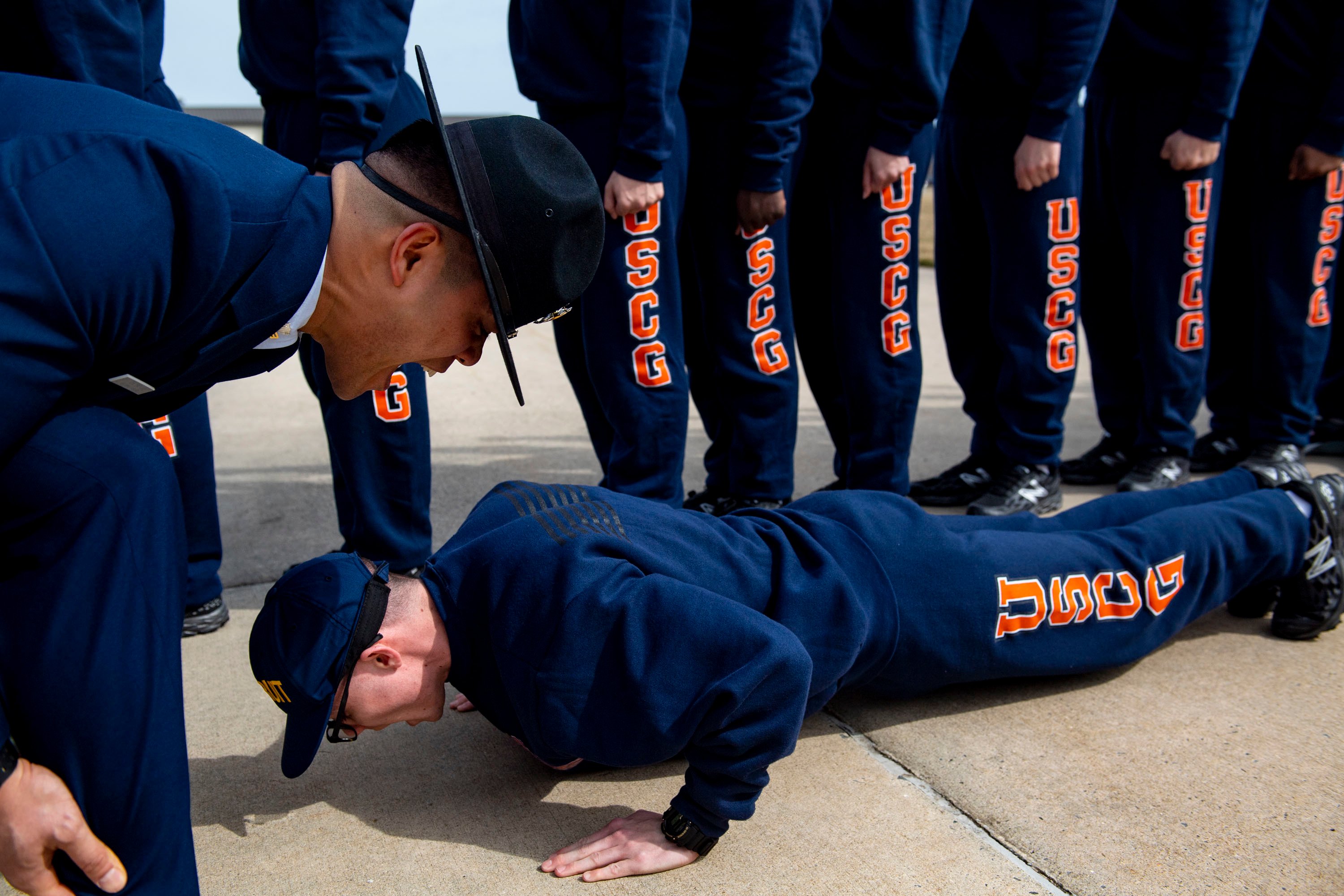
The Coast Guard, in an effort to take the stress out of gauging the physical fitness of its members, started a year-long effort revamping the way it measures body fat composition with the goal of encouraging healthy lifestyles and improving its female retention rates.
The pilot program was started because of a concern the Coast Guard’s method of measuring body fat composition was contributing to a lower female retention rates when compared to the number of men opting to remain in the Coast Guard, Commandant Adm. Karl Schultz said last month during an event co-hosted by the U.S. Naval Institute and the Center for Strategic and International Studies.
“We’re losing women here at a disproportional level,” Schultz said. “We found we’re discharging women at, you know, a three-fold rate over their male counterparts.”
Earlier this year, Rand Corp. released a study detailing reasons why women are leaving the Coast Guard, Schultz said. The study, Why Do Women Leave the Coast Guard, and What Can Be Done to Encourage Them to Stay? detailed several factors causing women to leave the service and included some suggestions to improve retention.
The Coast Guard developed the pilot program because Schultz said the service couldn’t afford to lose capable members. “We’re trying to be more competitive for women colleagues,” he said.
The report specifically cited weight standards as a concern among female members of the Coast Guard.
“Although male participants did not raise this concern, female participants cited stress related to perceived unfairness of weight standards, arguing that those standards do not take into account different body types and body changes after childbirth. They noted as particularly problematic the use of the taping process as a measure of body fat to enforce weight standards. Furthermore, participants felt that standards were not aligned to job ability,” the report states.
The Coast Guard’s response was to institute a pilot program offering all Coast Guard members a variety of options to display they are maintaining an appropriate level of physical fitness, Cmdr. Matt Rooney, chief of the policy and standards division in the Coast Guard’s assistant commandant for human resources office, told USNI News.
The body fat composition measurement still starts with a weigh-in. If the member weighs below their maximum allowable weight, the screening is over. If the member is over their weight limit, Rooney said the next step is using a tape measure to gauge body fat composition.
“Women were discharged for weight control issues at twice the rate of the population, so that was part of the reason we looked at that,” Rooney said. “The women’s retention study did indicate members do feel a little bit of stress during these periods of time, and some members may resort to unhealthy habits to bring themselves under their weight.”
The body fat screening involves taping males on their necks and waist, and females are taped on their necks, waist and hips. The member is now also taped with the abdominal body fat measure, Rooney said. If the member passes either of those two measurements, they are considered compliant.
“We chose the abdominal circumferences. It’s a good assessment of a person’s health, predictability of future health risk, and it is a little less intrusive than some of the other taping measures we have used,” Rooney said. “Along with that, National Health Institute studies found that extensive body fat in the abdominal region, particularly visceral fat, is an important independent health risk factor for disease risk. The higher the risk, the higher the person has of other diseases such as diabetes, hypertension, cardiovascular diseases.”
The Coast Guard standard for the abdominal circumference is a maximum of 39 inches for men and 35.5 inches for women.
For Coast Guard members who exceed both taping measurements, Rooney said they receive a medical screening to determine if they’re eligible to take a physical fitness test, involving a 1.5- mile run, push-ups and sit-ups. Standards are age-based.
“If they pass it, then they’ll be in compliance,” Rooney said. “If they are not eligible, refuse to take it, or they fail it, they will be screened as we already do for medical events that maybe we have missed, and if not there, they’ll be placed on medical weight probation.”
The Navy is not planning to change its current taping standard for measuring body fat composition. The service is evaluating making other changes to its physical readiness test (PRT), Cmdr. Dave Hecht, the spokesman for the Chief of Naval Personnel, told USNI News.
“Specifically, we are looking at replacing the ‘curl-up’ portion of the PRT with a plank exercise. One reason for this proposed change is that training for the plank strengthens the core, improves posture, and reduces risk of lower back injuries. The plank is a better test of core strength and endurance and will likely reduce lower back injuries or strain due to poor form when doing the curl-up. While there is no data that supports curl-ups are the cause of lower back injuries, they may aggravate pre-existing conditions,” Hecht said in an email to USNI News.
The Navy is also evaluating whether to include rowing machines as an additional cardio option for the PRT. The Navy is currently conducting a study to establish performance norms for these exercises. The study is expected to be completed in April.
For the Coast Guard, Rooney said the goal of trying new ways to determine physical fitness is to encourage healthier lifestyles. Too many members would engage in unhealthy activities, such as crash diets or dehydrating themselves, to make weight and avoid the need for taping.
“So, we’re hoping that by introducing a couple of different opportunities for them to demonstrate compliance to the standard that we’re going to encourage some more healthy practices in our population for the Coast Guard, for our military population,” Rooney said.





